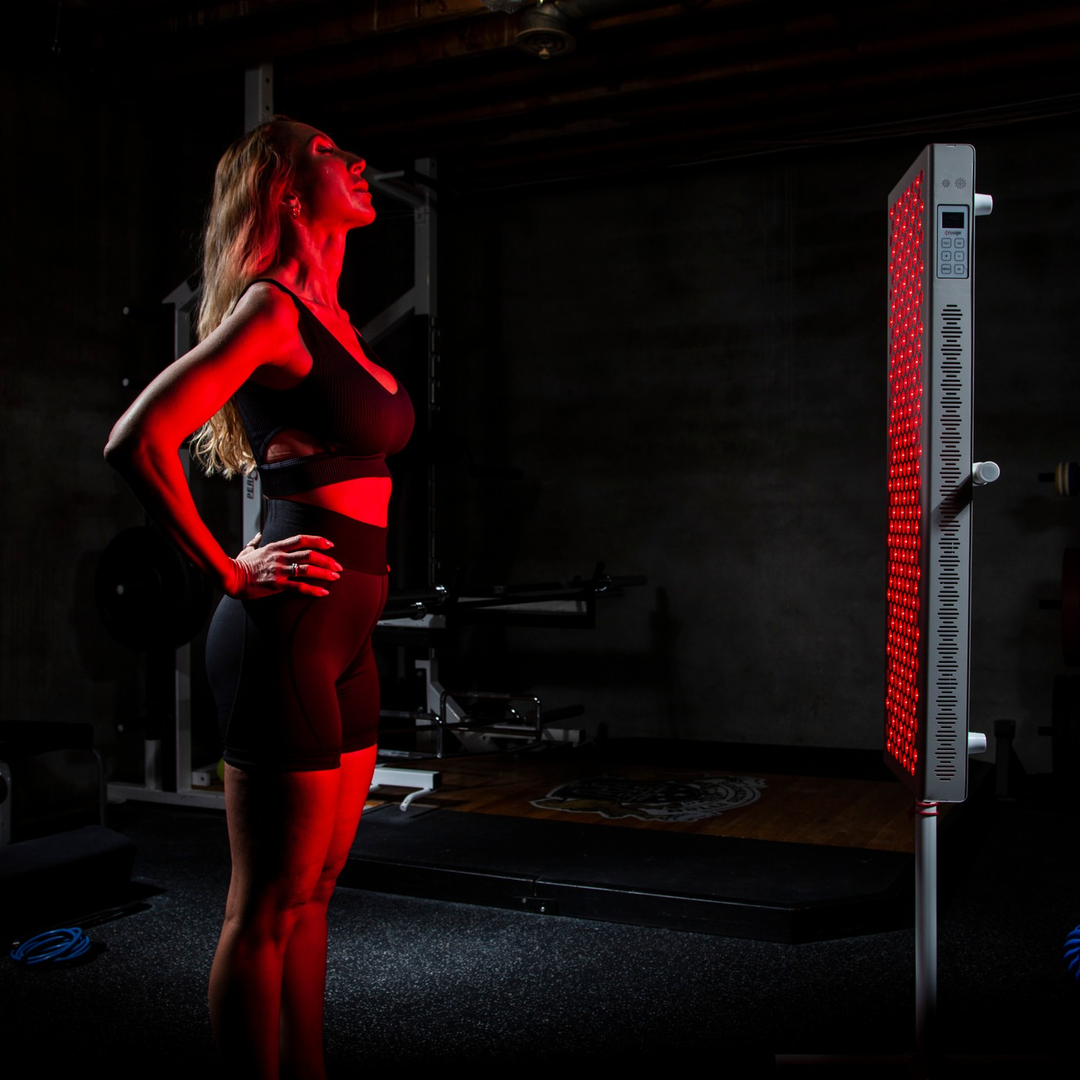![]() Free Shipping
Free Shipping ![]() Buy Now, Pay Later
Buy Now, Pay Later ![]() Eligible
Eligible
Say Goodbye to Discomfort: Genital Warts & Red Light Therapy Relief

Introduction
Genital warts, caused by the human papillomavirus (HPV), are a common and often distressing sexually transmitted infection (STI). While they are usually harmless, their appearance can lead to physical discomfort, emotional distress, and even relationship strain. Traditional treatments—such as topical creams, cryotherapy, and surgical removal—can be painful, time-consuming, and sometimes ineffective.
But what if there was a non-invasive, pain-free alternative? Red light therapy (RLT), also known as photobiomodulation, is emerging as a promising solution for managing genital warts and promoting skin healing. In this article, we’ll explore:
- What genital warts are and why they occur
- Conventional treatment options and their limitations
- The science behind red light therapy
- How RLT can help with HPV-related skin conditions
- Clinical evidence supporting its effectiveness
- Practical ways to use RLT for genital wart relief
By the end, you’ll have a clear understanding of whether red light therapy could be the solution you’ve been searching for.
Understanding Genital Warts: Causes and Symptoms
What Are Genital Warts?
Genital warts are soft, flesh-colored growths that appear on or around the genitals, anus, or thighs. They result from certain strains of HPV, most commonly types 6 and 11, which are considered low-risk (unlikely to cause cancer but still highly contagious).
How Do You Get Them?
HPV spreads through:
- Skin-to-skin contact during vaginal, anal, or oral sex
- Shared sex toys
- Mother-to-baby transmission during childbirth
Symptoms to Watch For
- Small, raised bumps (single or clustered)
- Itching or discomfort in the affected area
- Bleeding during intercourse (if warts are irritated)
Many people with HPV never develop visible warts but can still transmit the virus. Since HPV can remain dormant for years, outbreaks may appear long after initial exposure.
VELLGUS Elite V2
THE #1 RATED RED LIGHT DEVICE
VELLGUS pro V2
THE #1 RATED FULL BODY RED LIGHT DEVICE
Conventional Treatments for Genital Warts (And Their Downsides)
Doctors typically recommend the following treatments:
1. Topical Medications
- Imiquimod (Aldara): Boosts the immune system to fight HPV.
- Podofilox (Condylox): Destroys wart tissue.
- Sinecatechins (Veregen): A green tea extract with antiviral properties.
Drawbacks: Can cause skin irritation, redness, and burning. Requires weeks of consistent application.
2. Cryotherapy (Freezing)
Liquid nitrogen is used to freeze and destroy warts.
Drawbacks: Painful, may require multiple sessions, and can lead to blistering or scarring.
3. Surgical Removal
- Electrocautery: Burning warts with an electric current.
- Laser therapy: Using focused light to destroy wart tissue.
- Excision: Cutting warts off with a scalpel.
Drawbacks: Invasive, may require anesthesia, and has a risk of scarring or infection.
4. Immune Response Boosters
Since HPV is a virus, strengthening the immune system can help. Some doctors recommend:
- HPV vaccines (Gardasil) to prevent future outbreaks.
- Dietary changes (more zinc, vitamin C, and folate).
Drawbacks: Vaccines only prevent new infections—they don’t treat existing warts.
Given these limitations, many people seek alternative therapies—like red light therapy—for a gentler, yet effective approach.
Red Light Therapy: A Breakthrough for Skin Healing
What Is Red Light Therapy?
Red light therapy (RLT) uses low-wavelength red and near-infrared light to penetrate the skin and stimulate cellular repair. Originally developed by NASA for wound healing in space, it’s now used for:
- Skin rejuvenation
- Pain relief
- Inflammation reduction
- Viral and bacterial infection control
How Does It Work?
When red or near-infrared light is absorbed by skin cells, it enhances mitochondrial function, boosting ATP (cellular energy) production. This leads to:
✔ Faster tissue repair
✔ Reduced inflammation
✔ Improved blood circulation
✔ Enhanced immune response
Studies suggest RLT may also have antiviral effects, making it a potential ally against HPV-related warts.
Can Red Light Therapy Help with Genital Warts?
1. Promotes Wart Regression
A 2020 study in Photobiomodulation, Photomedicine, and Laser Surgery found that RLT can reduce viral load and accelerate wart clearance by enhancing immune activity.
2. Reduces Inflammation & Pain
Unlike harsh chemical treatments, RLT soothes irritated skin, reducing discomfort from existing warts.
3. Speeds Up Healing Post-Treatment
For those who undergo cryotherapy or surgery, RLT can minimize scarring and accelerate recovery.
4. Boosts Local Immunity
RLT stimulates lymphocyte activity, helping the body recognize and attack HPV-infected cells.
How to Use Red Light Therapy for Genital Warts
Option 1: At-Home RLT Devices
- Handheld red light devices (e.g., Rouge, Joovv)
- Wearable panels for targeted treatment
- LED masks (if warts are in accessible areas)
Recommended Protocol:
- Wavelength: 630-670nm (red) or 810-850nm (near-infrared)
- Duration: 10-20 minutes per session, 3-5 times per week
- Distance: 6-12 inches from skin
Option 2: Clinical RLT Sessions
Dermatologists and wellness clinics offer higher-powered RLT treatments for faster results.
Safety Considerations
- Avoid overuse (stick to recommended exposure times).
- Do not use on open wounds unless directed by a doctor.
- Consult a physician if warts persist after 4-6 weeks of RLT.
Final Thoughts: Is RLT Worth Trying?
While red light therapy isn’t a cure for HPV, it offers a non-invasive, pain-free, and scientifically backed way to:
✅ Reduce wart size and frequency
✅ Soothe discomfort
✅ Support faster healing
Combined with immune-boosting habits (healthy diet, stress management, and safe sex practices), RLT could be a game-changer for those struggling with recurrent genital warts.
Have you tried red light therapy for skin conditions? Share your experiences in the comments!
References
- Avci, P., et al. (2013). “Low-Level Laser Therapy for Wound Healing.” Lasers in Surgery and Medicine.
- Zhang, L., et al. (2020). “Photobiomodulation in HPV Infections.” Photomedicine and Laser Surgery.
- Hamblin, M. R. (2017). “Mechanisms and Mitochondrial Redox Signaling in Photobiomodulation.” Journal of Biophotonics.








